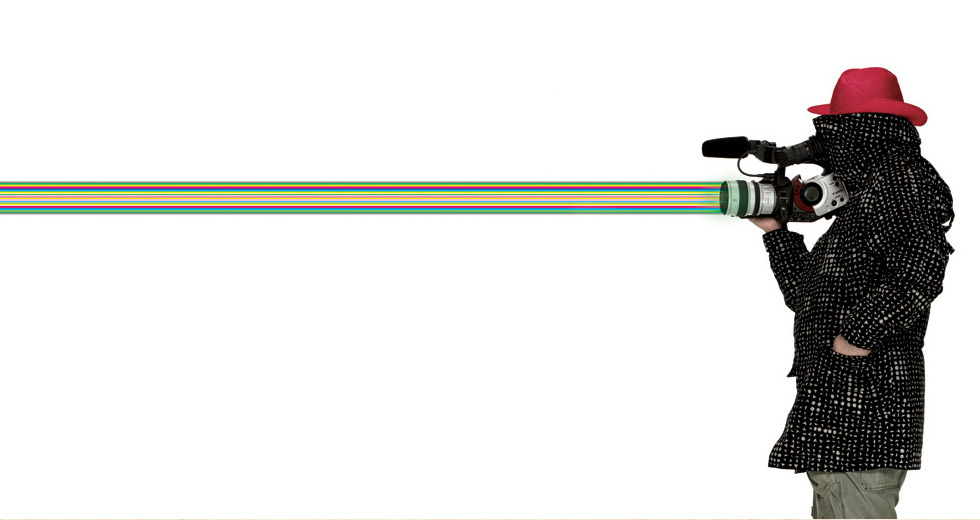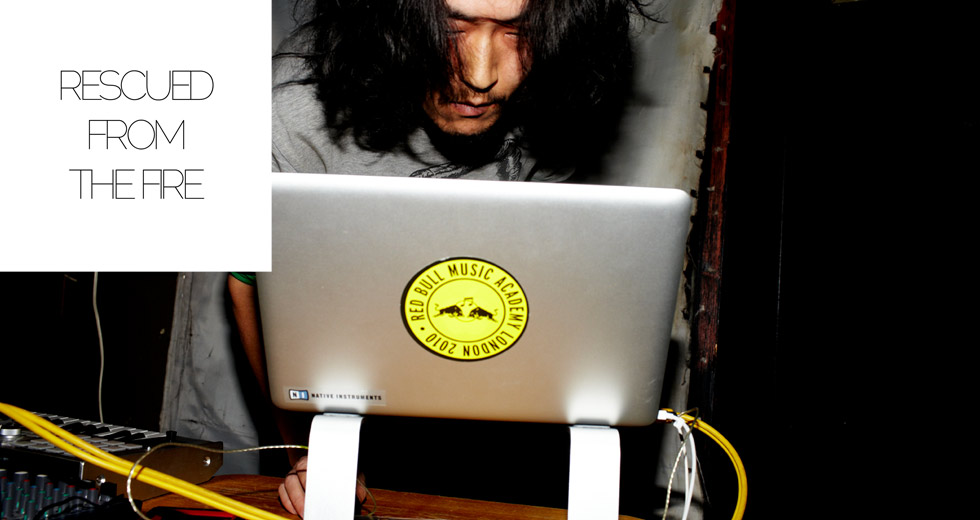J-Pop: A Video Guide
Having covered the weird world of Japanese pop music for years in print and for anime-themed sites like Japanator, music journalist Zac Bentz highlights 12 essential groups for those ready to delve into the world of life-size Barbies, miniature robot poodles and holographic icons.

When one thinks of Japanese pop music, visions of technicolour hair, dancing stuffed animals and girls with anime eyes might come to mind. Or a stage full of guys with video game fashion sense, bleached tips and too-perfect smiles. Or maybe even robots singing folk tunes to high-energy dance beats. And you’d be correct, because J-pop is all of that and much more.
Contemporary Japanese pop has its roots in the early ryukoka and enka genres. From there, J-pop took its cue from the burgeoning rock bands from the UK and US, like most around t at the time. Singers like Yumi Matsutoya embodied 1970s folk-rock sounds. Then Pink Lady defined the concept of the J-pop ‘idol’ by taking disco and adding lock-step choreography and vibrant style, launching the group into the 80s (as well as the US for a brief time). After that, electro-pop and new wave took over with the likes of Ryuichi Sakamoto and Yellow Magic Orchestra.
Since then the world of J-pop has gone a little insane. The non-stop technological advancement that made the nation of Japan famous around the world has also affected J-pop – not to mention anime and manga, aka cartoons and comics. In a way, J-pop is a distillation of that electronic pulse. Fusing a fascination for young anime girls with that of giant robots, it’s no wonder Japan leads the world in artificial singing stars. From groups of girls with enough members to fill a school, to totally synthetic idols infiltrating the internet like a sugar-coated virus, Japan has been amassing an army of pop bent on filling the Top 40 charts by sheer force of will, if not raw talent.
It’s a daunting task to try to plumb the depths of that frenetic world without a guide to help you keep one foot grounded in reality. So, here’s a brief look at the first few ranks in the J-pop army. There’s a seemingly endless flow of creative ideas, genre-mashing and eyebrow-raising moral decisions to be found on the island country. Once you start digging, you may never want to turn back.
AKB48
Let’s just get the craziest one out of the way early. That would be AKB48. The ‘AKB’ half of their name is derived from their location, Tokyo’s vibrant and electrified Akihabara district. The 48 initially stood for the number of members, 48 girls aged 14 to 20. That number has since risen to 62 (members, not ages). Added to this growing equation is the division of the group into sub-groups A, K, B and 4, with a recently announced fifth group named, you guessed it, 8. This massive rotation of ‘talent’ has manged to stuff the charts full of a non-stop barrage of singles and albums, making them the largest group in the country, both in sales and sheer size. But there’s also been the glaringly obvious bait for controversy, what with the very young girls dancing in bikinis, flashing their panties and acting out thinly veiled sexual fantasies. But hey, this is pop music we’re talking about. What did you expect? Oh, and if this doesn’t sound like enough variety to hold your attention, there’s also SKE48, SDN48, NMB48, HKT48... you get the idea.
Morning Musume
Morning Musume is another group like AKB48 in that it involves a huge number of girls shuffling through different sub-groups, all collectively known as Hello! Project. There are currently 10 Musume members, but much like other such groups, members are ‘graduated’ when they reach a certain age so there is a tremendous catalogue of past members. Their music tends to be simply playful and less overtly sexualised, but it still sounds like it came directly out of a cheesy karaoke machine.
Perfume
Perfume is a trio produced by Yasutaka Nakata, a man well known for his work with Capsule and for his involvement producing and remixing many other acts. Perfume’s sound has a much harder edge than many other pop artists, due almost entirely to Nakata’s own musical vision. That’s not to say that the group is any less commercial than others. Quite the opposite, as their songs are often debuted in various TV ads selling other products.
Ayumi Hamasaki
Ayumi Hamasaki is a diva of high order. While declining sales have been hovering over her head lately, there’s no denying her power to destroy the top of the charts. Her mellow yet wavering voice is instantly identifiable, as is her visual style. She’s tread much the same ground as someone like Madonna, while managing to maintain a more youthful feel while she matures.
SMAP
SMAP is an R&B tinged boy-band created by Johnny & Associates, one of the biggest talent agencies in Japan. While the extent of their talent is debatable, and it’s obvious that little thought is put into their production (“OK, for this video turn on a blue light and go stand in the corner”), their resulting fame is unquestionable, with tens of millions of copies sold over their 20 year, 20 album history. But music is only one outlet for SMAP members. They appear all over the spectrum in TV ads, variety shows and movies as well.
B’z
If you want to judge ‘pop’ as ‘popular’, you’d be hard pressed to find any single group more popular than B’z. 80 million records sold over their 20+ year career makes them the number one selling band in Japan. Not bad for a couple of guys hovering around 50 years old. Their sound is decidedly more rock and blues than traditional dance pop, but that doesn’t make them any less groovy or fun to move to.
Gackt
Gackt is a one-man powerhouse that has been active since the mid-1990s. First breaking into the scene as part of the vis-kei (visual shock) goth-rock scene in the band Malice Mizer, he has gone on to continually reinvent himself in the pop world. While always maintaining an air of hard-edged gloom, he’s really just another pretty-boy who likes to dance despite a stint of insisting he was hundreds of years old. He recently formed the band Yellow Fried Chickenz, a group more akin to epic pop-punk whose mission is to “change herbivore boys to carnivorous men.” Judging from their live act, they may be hungrier for each other than their ravenous female fans.
Hatsune Miku
You can argue about the finer points of whether or not a pop band is created solely to be a product, but when it comes to singing idol Hatsune Miku, there can be little debate. Because she really does come out of a box. She’s just one of many characters in the Vocaloid line of software. Her popularity with indie producers across the web, both in music and video, has made her one of the most prolific singing sensations of all time. Some estimates claim her voice appears in over 100,000 songs. She also appeared on stage as a hologram long before Tupac, a tradition in Japan since the days of Macross Plus singer Sharon Apple.
Kyary Pamyu Pamyu
A bit like blogger-turned-pop singer Shokotan before her, Kyary Pamyu Pamyu (aka Kiriko Takemura) began her career as a blogger and model. After her fashion fame rose, she turned to pop music and (again) super-producer Yasutaka Nakata. Her music is pure pop, no excuses. Her style exemplifies the hyper-visual Harajuku district, full of eye-melting color and vertigo-inducing patterns. But her music does contain a bit of actual irrefutable fun, even it is does lead to ear-worm level madness.
Omodaka
Omodaka is something of an enigma, but that is his intention. While we know his real name is Soichi Terada and that he has worked writing music for video games, there is little else to go on. His subtle gender-bending stage persona wears the traditional garb of a miko, a Shinto shrine maiden. His face is covered by a smooth, white, expressionless mask. His music blends traditional folk and Enka music along with occasional vocals from real folk singer Kanazawa Akiko (who sings live from a computer screen), with Gameboy chiptunes and other electro sounds. This creates something unique: funky electro folk. Omodaka creates a new element with a taste that could only come from Japan. His larger media group called Far East Recording also produces his eye-blasting, mind-bending videos.
World Order
World Order is the perfect act for the YouTube generation. That is to say sure, their music is OK, but their videos are amazing. Featuring a group of seemingly stereotypical salarymen, World Order is a mix of public performance art and precision choreography. Their moves are so intricate and detailed that they take on the air of optical illusions. This might be considered a dubious trick if not for the fact that their their audience is obviously right there next to them, shown with both confused expressions and bemused laughter. Oh and just to add to the weirdness, they were formed and fronted by retired mixed martial artist and kickboxer Genki Sudo.
Polysics
Polysics is a new-wave/rock/pop band that somehow manages to take an encyclopedic knowledge of all music genres from metal to pop and blend it all into one glorious, high-def onslaught. Their visual style is all about Devo and Japan’s own P-Model, while their music is a blistering guitar and synth-pop barrage. Fusing Japanese, English and singer Hiroyuki Hayashi’s own ‘space language’, Polysics is a post-modern slab of high-octane rock and roll with a sleek electro edge. While many fans mourned when keyboardist Kayo left that band, the trio that remained kept the train rolling and continues to relentlessly release some of the most amazing music anywhere.

